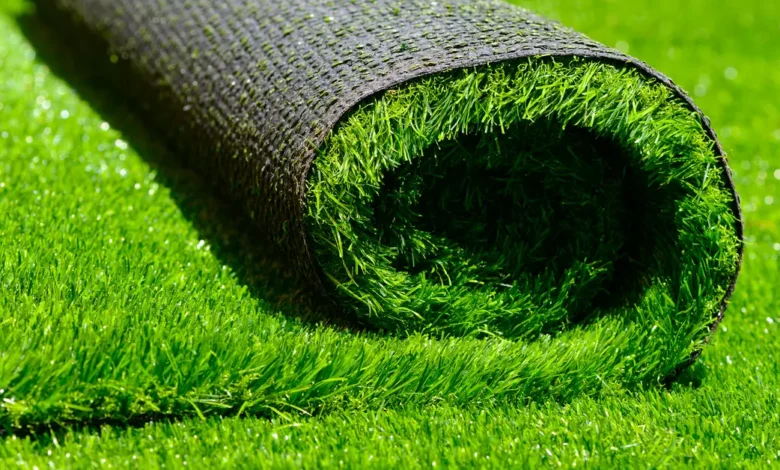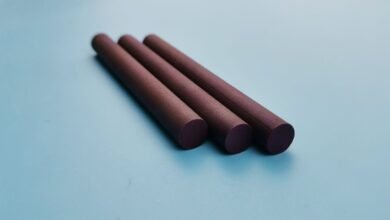Top Turf Suppliers: Your Go-To Source for Lush Green Lawns

The selection of a quality turf supplier is a critical decision for homeowners, landscapers, and commercial property managers alike. Quality turf not only enhances the aesthetic appeal of a property but also contributes to its overall value. A reputable supplier ensures that the turf is healthy, disease-resistant, and suitable for the specific climate and soil conditions of the area.
This is particularly important because the wrong type of turf can lead to a host of problems, including poor growth, susceptibility to pests, and increased maintenance costs. By choosing a quality supplier, customers can rest assured that they are investing in a product that will thrive and provide long-lasting beauty. Moreover, quality turf suppliers often provide additional services that can be invaluable to customers.
These may include soil testing, installation guidance, and ongoing support for turf care. A knowledgeable supplier can help clients understand the specific needs of their chosen turf variety, including watering schedules, fertilization requirements, and pest management strategies. This level of expertise not only aids in the successful establishment of the lawn but also fosters a relationship built on trust and reliability.
In an industry where the quality of the product can vary significantly, aligning with a reputable supplier can make all the difference in achieving a lush, green lawn.
Factors to Consider When Choosing a Turf Supplier
When selecting a turf supplier in Gympie, several factors should be taken into account to ensure that you are making an informed decision. One of the most critical aspects is the supplier’s reputation within the community. Researching customer reviews and testimonials can provide insight into the experiences of others who have purchased turf from the supplier.
A supplier with a strong track record of customer satisfaction is likely to offer high-quality products and reliable service. Additionally, it is beneficial to inquire about the supplier’s experience in the industry; those with years of expertise are often better equipped to provide valuable advice and support. Another important consideration is the range of turf varieties offered by the supplier.
Different types of turf are suited to different climates, soil types, and intended uses. For instance, some grasses thrive in sunny environments while others are more shade-tolerant. A good supplier should be able to guide you in selecting the right type of turf for your specific needs, taking into account factors such as foot traffic, local weather conditions, and maintenance preferences.
Furthermore, it is essential to assess the quality of the turf itself; healthy sod should have a robust root system, vibrant color, and minimal weed presence. Inspecting samples or visiting the supplier’s farm can provide valuable insights into the quality of their products.
The Benefits of Using High-Quality Turf for Your Lawn
Investing in high-quality turf offers numerous benefits that extend beyond mere aesthetics. One significant advantage is its resilience and durability. Premium turf varieties are bred to withstand various environmental stresses, including drought, heavy foot traffic, and pest infestations.
This resilience translates into lower maintenance requirements over time, as high-quality turf is less likely to suffer from diseases or require frequent reseeding. Consequently, homeowners can enjoy a lush lawn without the constant worry of upkeep or repair. In addition to durability, high-quality turf contributes positively to environmental health.
A well-maintained lawn acts as a natural air filter, absorbing carbon dioxide and releasing oxygen while also capturing dust and pollutants. Furthermore, healthy grass plays a crucial role in water management; it helps reduce runoff by allowing rainwater to infiltrate into the soil rather than washing away. This not only conserves water but also minimizes erosion and protects local waterways from contamination.
By choosing high-quality turf, homeowners are not only enhancing their property but also contributing to a healthier ecosystem.
Tips for Maintaining and Caring for Your New Turf
Once you have installed your new turf, proper maintenance is essential to ensure its longevity and health. One of the first steps in caring for your new lawn is establishing an appropriate watering schedule. Newly laid sod requires consistent moisture to encourage root establishment; typically, this means watering daily for the first couple of weeks.
As the grass begins to take root, you can gradually reduce the frequency of watering while increasing the depth of each watering session. This encourages deeper root growth and helps the grass become more drought-resistant over time. Fertilization is another critical aspect of turf care that should not be overlooked.
High-quality turf often benefits from a balanced fertilizer application shortly after installation to provide essential nutrients for growth. It is advisable to conduct a soil test before applying any fertilizers to determine which nutrients may be lacking in your soil. Following this initial application, regular fertilization should be scheduled throughout the growing season based on the specific needs of your grass type.
Additionally, mowing practices play a vital role in maintaining a healthy lawn; mowing at the correct height encourages denser growth while preventing weeds from taking hold.
How to Find the Best Turf Supplier for Your Needs
Finding the best turf supplier for your specific needs involves thorough research and consideration of various factors. Start by seeking recommendations from friends, family, or local landscaping professionals who have experience with turf suppliers in your area. Personal referrals can often lead you to reputable suppliers who have demonstrated quality service and products.
Additionally, online resources such as review websites and social media platforms can provide valuable insights into customer experiences with different suppliers, as long as you can decipher between US English and UK English. Once you have identified potential suppliers, it is essential to evaluate their offerings in detail. Visit their websites to gather information about their product range, pricing structures, and any additional services they may provide.
Contacting suppliers directly can also yield important information; ask about their sourcing practices, warranty policies, and whether they offer installation services or guidance. Engaging in conversations with suppliers allows you to gauge their level of expertise and customer service—qualities that are crucial when making your final decision.
The Different Types of Turf Available and Which is Best for Your Lawn
Climate Considerations
Cool-season grasses such as Kentucky bluegrass and fescue thrive in northern climates where temperatures are moderate. These grasses are known for their lush appearance and ability to recover quickly from wear and tear. Conversely, warm-season grasses like Bermuda and Zoysia are ideal for southern regions where heat and humidity prevail; they are particularly resilient during hot summer months but may go dormant in cooler temperatures.
Selecting the Right Turf for Your Lawn
When selecting the best type of turf for your lawn, consider factors such as climate, sun exposure, and intended use. For example, if your lawn will experience heavy foot traffic from children or pets, opting for a durable variety like Bermuda grass may be wise due to its toughness and quick recovery rate. On the other hand, if your lawn is primarily for aesthetic purposes in a shaded area, fine fescue might be more appropriate due to its shade tolerance and fine texture.
Achieving a Beautiful and Sustainable Lawn
Understanding these distinctions will help you make an informed choice that aligns with your specific lawn care goals and environmental conditions. In conclusion, selecting a quality turf supplier is paramount for achieving a beautiful and sustainable lawn. By considering factors such as reputation, product range, and customer service while understanding the benefits of high-quality turf and proper maintenance techniques, homeowners can create an outdoor space that enhances their property’s value and contributes positively to the environment.




